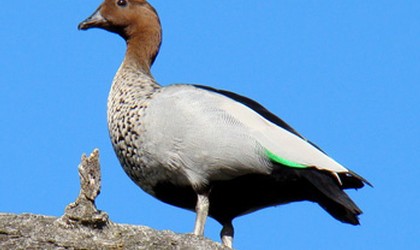Along many creeks flowing through native bushland reserves there are quite a few ponds or deeper swimming pools. Several water birds frequent the larger swimming pools in search of meals in addition to establishing a safe nesting setting in thicker vegetation across the shoreline.
One such fowl is the Pacific Black Duck (Anas superciliosa). Although it is present in suitable habitats throughout Australia, it is generally a cautious chook when not accustomed to people.

It may be solitary, but in addition gathers in pairs and small teams. When breeding, mature geese are largely seen in pairs as they dabble alongside the edges of water programs trying to find aquatic plants.
This frequent species is characterised by a particular blue invoice, black and white markings on its head, with its neck and physique being covered in dappled darkish brown plumage.
Other ducks that frequent bushland waterways are the Australian Wood Duck (Chenonetta jubata) and the Australian Shellduck (Tadorna tadornoides). All three mostly prefer a hole in a tree for nesting which is just a brief distance above the ground in close proximity to water.
These three species might lay as a lot as 10 eggs each. The clutch leaves the nest very quickly after birth. Hidden In The Hills: Ducks and father take seriously the accountability of raising and defending their family. The Australian Wood duck illustrated has a clutch of a minimal of 13 chicks to take care of.
When young, the newborn ducklings are confined to the ground, concealing themselves in long grass not removed from the father or mother birds. They also have the power to swim within a few days of hatching.
See related story: Hidden within the Hills: Kunzeas
Table of Contents
One such chook is the Pacific Black Duck (Anas superciliosa). Although it is present in suitable habitats all through Australia, it is usually a cautious bird when not accustomed to people.
